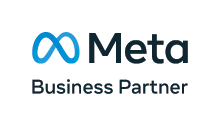In a market as crowded and fast-paced as cybersecurity, cutting through the noise and attracting attention is a constant challenge. Cyber companies looking to differentiate themselves can do so by strategically combining SEO, paid advertising, and content marketing to create a powerful presence. Together, these tactics position a brand as an industry leader, educate audiences, and build relationships that ultimately drive growth.
A well-crafted SEO strategy remains the backbone of digital visibility. Research shows that around 68% of online experiences start with a search engine, and in a field as competitive as cybersecurity, appearing at the top of search results can be the difference between gaining a client and losing them to a competitor.
Targeted SEO: Making your cyber company discoverable to the right audience
Understanding keyword relevance in a B2B space requires a bit more precision than B2C because potential clients are often conducting technical research. Cyber companies can benefit from utilising long-tail keywords that match specific needs, such as “cybersecurity solutions for financial institutions” or “compliance monitoring tools for healthcare.” According to Ahrefs, keywords with low competition but high specificity are often more likely to drive qualified leads, particularly in niche areas. By targeting these, cyber companies can increase the chances of reaching high-value prospects with purchasing intent.
On-page optimisation is another critical component of SEO. This includes optimising page titles, meta descriptions, headers, and even the structure of the website to make it both user-friendly and search engine-friendly. For example, a clear, intuitive navigation structure helps both users and search engines understand your site better, which can positively affect your ranking. But the optimisation doesn’t stop there. For cyber companies, building trust is essential, and search engines are now considering user experience and site security as ranking factors. Google, for instance, prioritises sites with secure HTTPS encryption, meaning cyber companies absolutely need to ensure their sites are both safe and fast.
Paid Advertising: Reaching cyber decision-makers faster
While SEO is a gradual process, paid advertising can provide instant visibility and help cyber companies gain traction quickly. Google Ads and LinkedIn Ads are often the top choices for B2B advertising, each with distinct advantages. Google Ads can capture demand directly from those actively searching for solutions, while LinkedIn Ads are better suited for targeting specific industries, job roles, and company sizes. 65% of B2B marketers report that LinkedIn has been their most successful social platform for paid ads.
To maximise the effectiveness of paid advertising, cyber companies should start with a clear understanding of who they want to reach and what their pain points are. For instance, if a company specialises in AI-powered threat detection, it could target CISOs and IT directors specifically with ads addressing AI-driven cybersecurity’s advantages. A well-defined audience and targeted message ensure the advertising spend isn’t wasted on individuals who aren’t decision-makers or have no immediate need for cybersecurity services.
Another essential element in paid campaigns is the landing page experience. A strong ad is only as good as the landing page it directs users to, and for cybersecurity, this page needs to be informative, trustworthy, and conversion-focused. Key components include clear messaging, proof points like case studies or client testimonials, and a prominent call-to-action that guides visitors toward contacting sales or booking a demo. Conversion rate optimisation (CRO) techniques, such as A/B testing different landing page elements, can significantly improve the return on ad spend by increasing the percentage of visitors who take the desired action.
Content Marketing for Cybersecurity: Building trust and authority
Producing high-quality, insightful content allows cybersecurity brands to showcase their expertise and build trust with potential clients. Statistics suggest that 82% of B2B buyers review at least five pieces of content from a potential vendor before making a purchase decision. For a cybersecurity firm, this means having a content strategy that educates, informs, and reassures.
Effective content marketing should address both top-of-funnel and bottom-of-funnel stages. At the top of the funnel, blog posts, white papers, and thought leadership articles on topics like “emerging cybersecurity threats” or “how to prepare for GDPR audits” can attract visitors in the awareness stage. Cyber companies can use these pieces to draw attention to their unique expertise, helping to build a sense of authority and trust in the brand. Consistent blogging, for instance, has been shown to generate 67% more leads than companies that don’t engage in blogging, making it an essential part of a content strategy.
For leads that are closer to conversion, bottom-of-funnel content like case studies, detailed product guides, and webinars are invaluable. These provide prospective clients with in-depth information on how a company’s products or services work in real-life scenarios, which can ease any final hesitations. For example, a case study demonstrating how a company’s threat detection tool helped a similar client avoid a data breach would resonate well with prospects who are in the final stages of their decision-making process.
Bringing It All Together: Integrating SEO, ads, and content for cyber success
All three strategies – SEO, paid ads, and content marketing – are interconnected digital marketing strategies. Paid ads can boost the visibility of high-performing SEO content, while engaging content supports SEO and gives users more to interact with when they click through from ads. For cyber companies, integrating these approaches into a cohesive strategy allows for consistent visibility across multiple touchpoints, increasing the likelihood that a potential client will encounter and engage with the brand.
What can a cyber company do to put this into action?
- Start by conducting a comprehensive keyword analysis to identify long-tail keywords that target specific decision-makers or industries.
- Ensure your website is optimised for both search engines and user experience, with fast load times and secure HTTPS encryption.
- Use paid ads strategically, targeting specific job roles on LinkedIn and active searchers on Google, but always lead these users to an optimised, conversion-focused landing page.
- In terms of content, create a content calendar with a balance of educational articles, thought leadership, case studies, and actionable guides.
- Aim to publish regularly and repurpose content across different formats – for example, turn a popular blog post into an infographic or a webinar to capture a new audience segment.
- Finally, test and refine your strategies regularly. Digital marketing success is rooted in experimentation, and A/B testing ad creatives, landing pages, and calls-to-action will help refine the approach over time.
While SEO, paid ads, and content marketing are powerful individually, they are strongest when integrated. With a clear strategy and ongoing optimisation, cybersecurity companies can carve out a unique space in a competitive field, building authority, attracting new leads, and, ultimately, driving growth. The cyber industry moves fast, but a well-executed digital marketing strategy ensures companies not only keep up but lead the way.
About the Author
Mila is CMO of the Tech & SaaS practice at AccuraCast. An experienced B2B marketer Mila has proven success in turning companies into market leaders. Skilled in driving performance, productivity, and profitability for businesses worldwide, particularly in the SaaS technology sector within both start-up and corporate environments.











